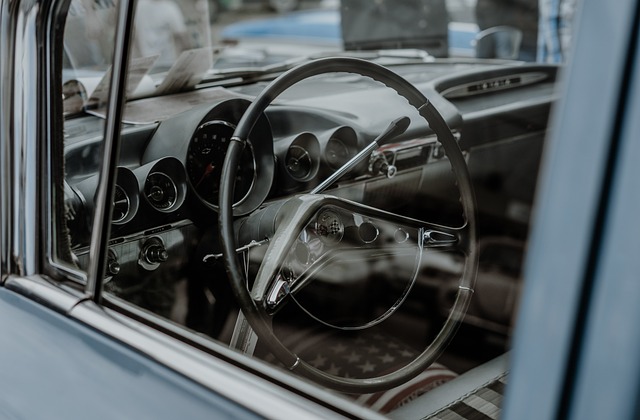California's vehicle registration process mandates a rigorous VIN verification to ensure vehicle safety and legitimacy. A VIN inspector, or vin verifier, checks for discrepancies by examining the vehicle against records of its engine, chassis, and body panels. Proper documentation and identity proof are crucial. This procedure prevents fraud, ensures legitimate vehicles receive registration, and is essential during DMV vin verification and vin number verification. Buyers should gather relevant documents, including registration and insurance, locate the VIN on the door frame, and submit it to a trusted vin inspector or use the CA DMV's online system. Addressing common issues, like inaccurate records, and using reputable local services ensures a smooth process, enhancing safety and transparency in California's automotive market.
Navigating California’s VIN (Vehicle Identification Number) verification process is essential for any vehicle owner or buyer. This guide breaks down the requirements and steps involved in ensuring your vehicle is vin verified and safe to drive. We explore the role of a VIN verifier and inspector, providing a step-by-step walkthrough tailored to California’s DMV procedures. Learn about common issues and tips to streamline the process, ensuring you can quickly verify your VIN number with confidence, avoiding potential problems ‘vin inspection near me’ might present.
- Understanding VIN Verification Requirements in California
- Who is a VIN Verifier and What are Their Roles?
- The Step-by-Step Process of VIN Inspection in CA
- Common Issues and Tips for a Smooth VIN Verification
Understanding VIN Verification Requirements in California

In California, vehicle owners are required to undergo a thorough vin verification process as part of registering their cars with the Department of Motor Vehicles (DMV). This strict mandate is in place to ensure the safety and authenticity of vehicles on California roads. The process involves a vin inspector meticulously checking the Vehicle Identification Number (VIN) for any discrepancies or signs of tampering. A vin verifier will examine various components, including the engine, chassis, and body panels, to confirm that the vehicle matches the provided VIN records.
California’s vin number verification requirements are essential to prevent fraud and ensure only legitimate vehicles are on the road. Owners must present valid documentation and proof of identity when undergoing this inspection. A vin verified status is crucial for obtaining a registration and license plate, emphasizing the importance of accurate and reliable vin verification services accessible through local vin inspection centers or authorized DMV offices.
Who is a VIN Verifier and What are Their Roles?

A VIN Verifier is a specialized professional entrusted with the crucial task of ensuring vehicle authenticity and history through the process of VIN verification. They play a vital role in the automotive industry, particularly during DMV vin verification and vin number verification processes. These experts are trained to thoroughly inspect vehicles, cross-referencing vin verified data against various databases to uncover any discrepancies or hidden history that might impact a vehicle’s safety or legality.
As you search for vin inspection near me, consider the skills and expertise of these vin inspectors. They possess the knowledge to navigate complex vin verification procedures, ensuring that every aspect of the vehicle, from its structural integrity to its operational capabilities, meets the required standards. By employing their services, individuals can gain peace of mind, knowing that their potential purchase is a safe and legal one.
The Step-by-Step Process of VIN Inspection in CA

In California, navigating the VIN (Vehicle Identification Number) verification process involves a systematic approach to ensure vehicle authenticity and history. The step-by-step process begins with gathering essential documents related to the car, such as the registration card and proof of insurance. Next, owners or verifiers should locate the VIN number, typically found on the vehicle’s driver-side door frame. This unique 17-character code is then submitted to a trusted vin verifier or used directly through the California DMV’s online system for vin verification.
The vin inspector will cross-reference this number against multiple databases to gather detailed information about the vehicle’s past, including ownership history, accident records, and outstanding recalls. Once the data is compiled, a comprehensive report is generated, indicating whether the VIN is verified or if any discrepancies are found. This process ensures that California residents can make informed decisions when purchasing used vehicles, enhancing safety and transparency in the automotive market.
Common Issues and Tips for a Smooth VIN Verification

Navigating common issues during California’s VIN (Vehicle Identification Number) verification process can make all the difference in ensuring a smooth experience. One frequent challenge is inaccurate or incomplete vehicle history records, which may lead to delays. To avoid this, ensure you have access to detailed service and ownership history, as well as any relevant repair documents. A reliable vin verifier or inspector can cross-reference this information to provide a vin verified status, eliminating potential roadblocks at the DMV or during future inspections.
Before attempting a VIN verification, prepare by gathering essential documents like the vehicle’s registration, title, and insurance proof. Also, double-check that your vehicle meets all environmental and safety standards as per California regulations. Using a local vin inspection service can offer convenience and expertise, especially if you’re unfamiliar with the process. Remember to choose an authorized and reputable vin inspector to guarantee accuracy and avoid any potential scams or misleading practices associated with “vin verification near me” services.
Navigating California’s VIN verification process involves understanding specific requirements, recognizing the role of a qualified VIN verifier or inspector, and following a meticulous step-by-step procedure. By addressing common issues and heeding valuable tips, you can ensure a smooth process that culminates in a reliable and accurate vin verified status. Remember, a vin inspector is your key to navigating this process successfully, as they possess the expertise to interpret results and provide expert advice. With these insights, you’re well-equipped to tackle vin verification, vin number verification, and even that elusive DMV vin verification.
